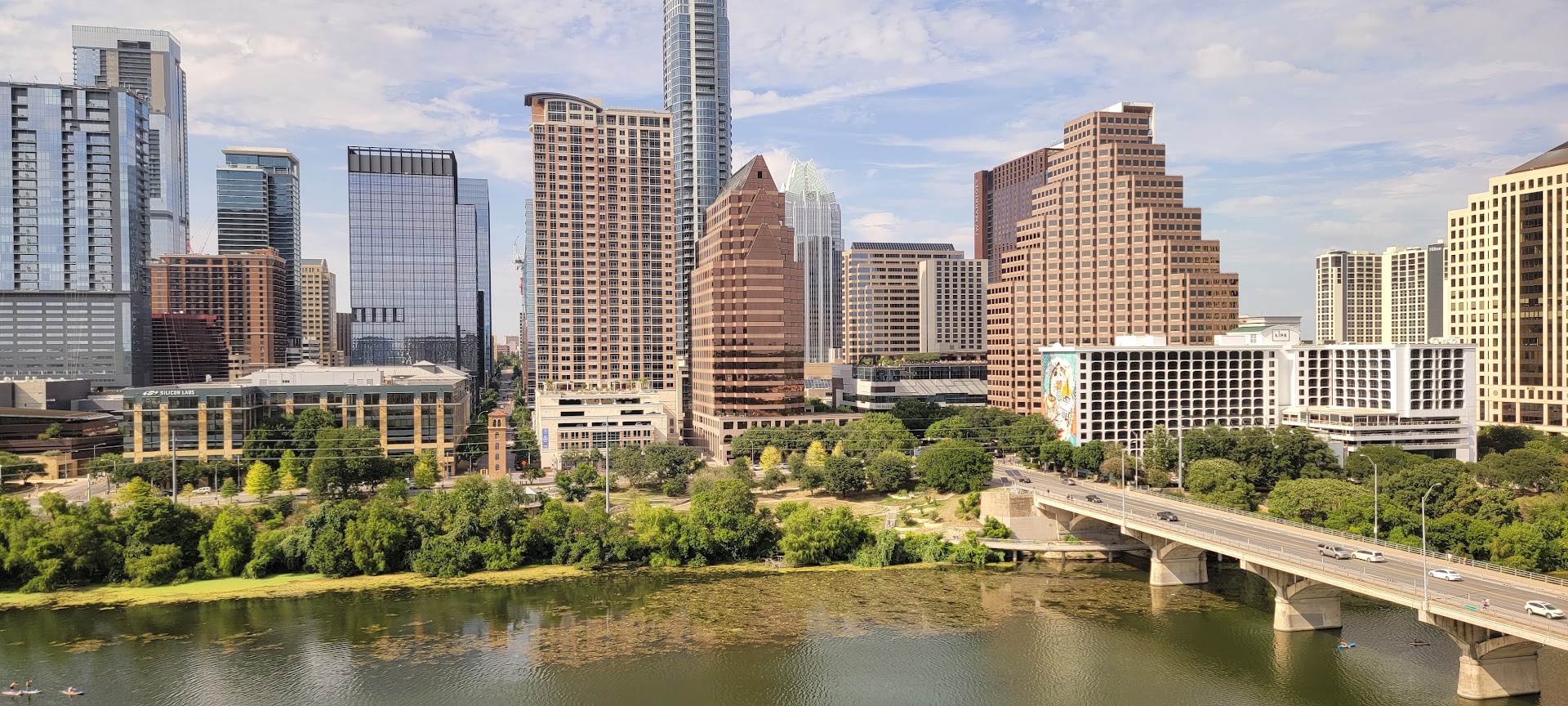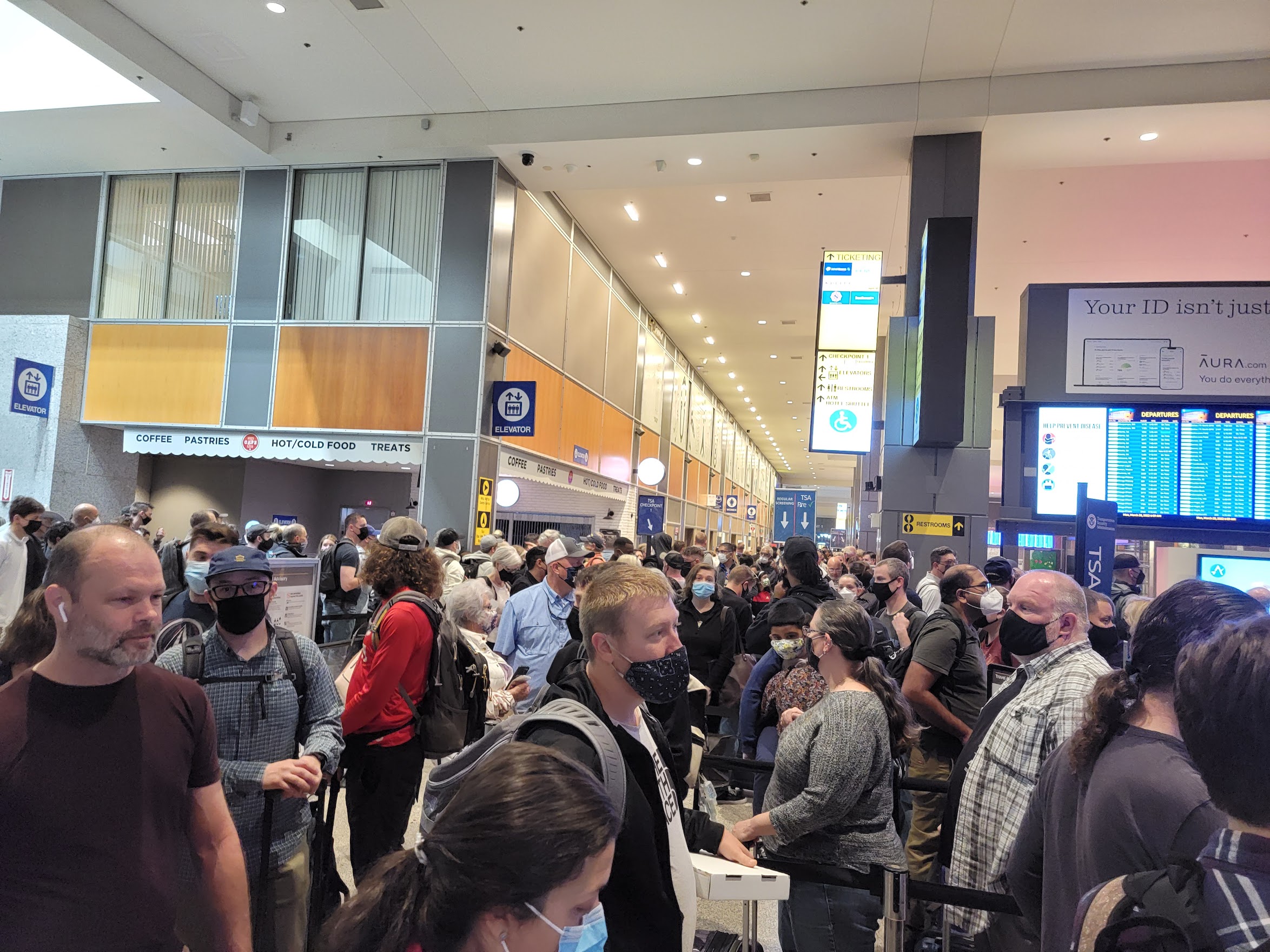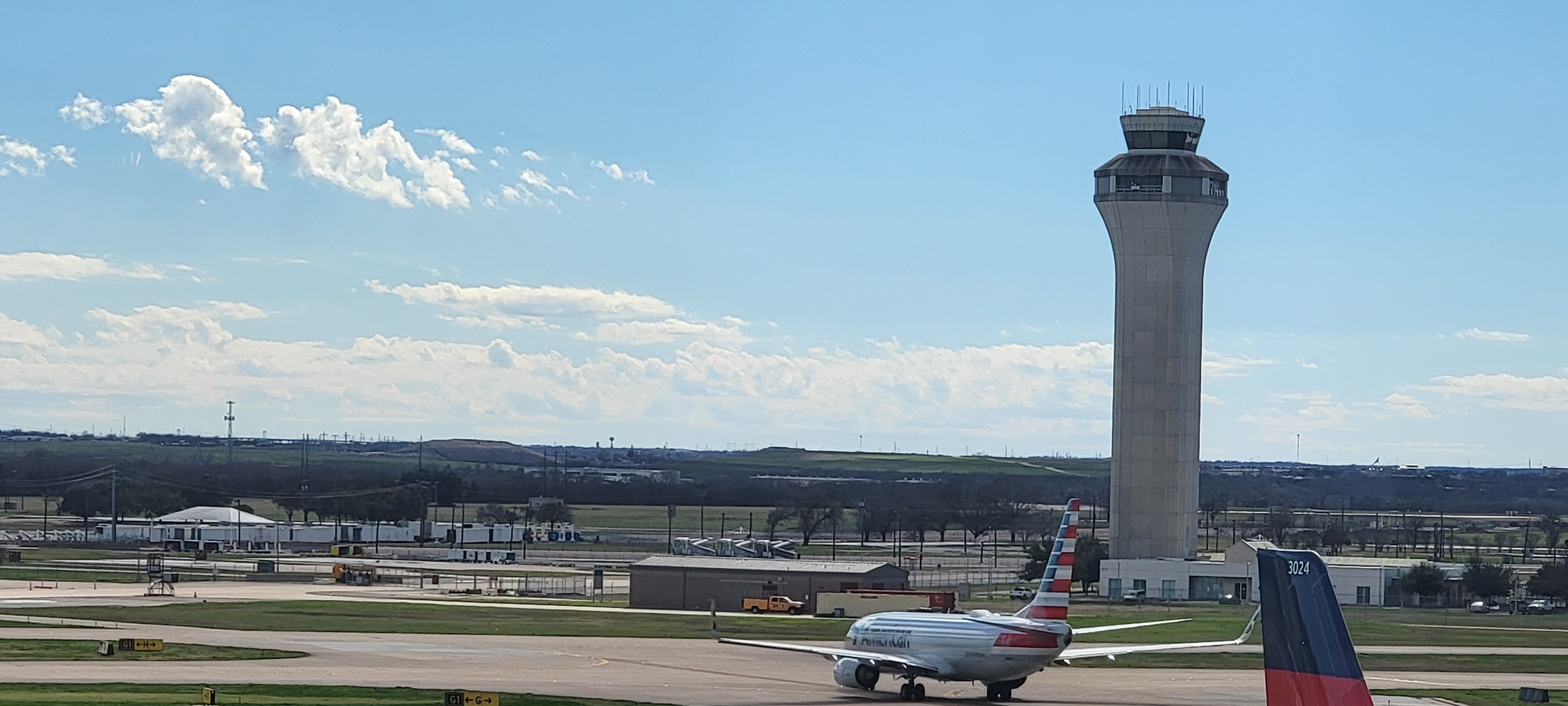Austin has had one of the fastest growing airports on the country, year-after-year for many years. American Airlines planted a flag, growing tremendously there, though Southwest Airlines remained the largest carrier in the market by a wide margin.
Now American has pulled back almost completely, retrenching to hub flights and limited Mexico leisure service.

In other words, American’s adventure at building a small hub or focus city has come to an end. Over the last year they’ve eliminated service to such cities as Cincinnati; Cozumel; Jacksonville; Memphis; Reno; Albuquerque; El Paso; Fort Myers; Kansas City; Oklahoma City; Sacramento; Tampa; Washington Dulles; Nassau; Punta Cana; Liberia; San Juan; Puerto Vallarta; and Las Vegas.
Now they’re pulling out of Boston; Orlando; Nashville; Raleigh and Orange County.
The latest Diio update had the following adds (Green), and removals (Red) of domestic routes by major carriers this week. pic.twitter.com/i66112oVc3
— AdrianWaltz (@AdrianWaltz) September 14, 2024
Chief Commercial Offer Vasu Raja used to describe Austin as “his love language.” Vasu is no longer American’s love language, but the pullback in Austin began long before his termination.
- American’s growth was a bet on Austin’s growth
- A bet that they could squat gates (there won’t be real capacity growth at the airport until the 2030s)
- A strategy to do this with low cost regional jets which ran into problems

They ran into problems with their pilot scope clause, flying too many regional jets from a non-hub airport. And an airline that isn’t making money can’t afford such adventures, which would have become more costly. But it’s not just the regional jet flights that will now be gone, but mainline also.
One Mile at a Time argues that the pullback is in part of a function of slowing Austin growth, citing declines in the real estate market. However,
- Real estate has dropped from inflated heights, it grew among the fastest during the pandemic so appears to fall among the most in simple mean reversion.
- But it’s also more a supply story than a demand one, since Austin has done more than most cities to relax zoning to spur new housing development.
- Delta is coming in with growth behind American’s retreat.

Delta certainly sees Austin as a growing market, hence their strategy to squat gates, trying to make their short regional jet flights work, flying migrants out of border cities. Demand for flying from southern Texas airports to Austin is mostly out of those southern cities, not Austin-originating, and load factors are much stronger leaving those cities than returning.

Austin was a strong performer for American before the pandemic, but a lot of their growth wasn’t just performing poorly on its own it was also dragging down the performance of hub routes with Austin service, as passengers simply connected through Austin for lower fares as the airline tried to deal with load factor issues. In other words, Austin was hurting DFW yields.


the people that are arguing that the AUS market is collapsing are sore losers that can’t admit they missed out.
AUS is quirky but it is a strong local market with a healthy dose of education, business and government traffic.
AA was siphoning off traffic from DFW and trying to beat WN in a market where WN didn’t have to do much to maintain its position.
DL might not be making money on its incremental flying but their system profitability is more than high enough to support some developmental flying.
Since DL managed to build its coastal hubs during the pandemic – and the internet is convinced DL loses money flying any one of 4 of them – a few regional jets worth of flying at AUS should be more than within DL’s ability to support.
some sources say AUS is negotiating gate usage contracts with airlines not just for the current terminal but also the new terminal. is that true, Gary?
If so, DL is making a play to gain space while AA is realizing it has to back out now because it can’t support the level of flying it was doing at AUS, even w/o the huge number of RJ flights.
AUS is negotiating with airlines for a new long term lease which will cover the development of the new mid field terminal aka Concourse B. As it presently stands, AA will grow to 9 gates, DL will grow to 15 (both essentially doubling their footprint) in the existing Concourse A. UA and WN will move to Concurse B (along with NK) where WN will double to 16 gates, and UA will add one gate for a total of 5. NK will have 1-2 gates there as well.
UA’s plan for AUS is interesting because the other big 4 carriers (AA, DL, and WN) will be doubling their gate footprint while UA will see just incremental growth via upgauging aircraft on hub-hub routes, where as DL is clearly looking at the future of AUS as a small Texas hub. UA’s plan is understandable given their IAH hub just up the road but it will be interesting to see if DL’s move plays out given their current lack of presence in Texas.
One way fares on AA to AUS were often considerably lower than to DFW as Spirit and SW competed aggressively in AUS. I bet AA noticed that some one-way flyers with carry on luggage only were buying to AUS but (intentionally) not completing the 2nd leg to AUS. I almost did it myself a few times but either flew SW to Love on a low fare or got a good, but not common, non-stop web special AAvantage fare to DFW (8k to 12k).
@ Tim — Please shut it.
Bob,
this is great information – the first I have heard about the proposed gate assignments.
The real question will be how many gates each carrier has between now and the new terminal. Is it true that there is a bus gate being built which will bridge to the new terminal? Any idea how it will be used?
If DL gains a few incremental gates, they could easily keep growing so that 15 gates 5 years from now is not a huge amount of growth capacity when the new terminal opens. DL would probably want a 100-120 flight operation which is similar to what RDU was before covid – RDU hasn’t recovered as well as other cities. DL needs some connectivity along the central southern tier – Mississippi to the west and Arizona to the east- which it lost by closing the DFW hub. They also need to serve the same medium size cities that AA, UA and WN serve.
UA will be focused on beefing up its domestic hubs so is not likely to do anything other than that domestically – esp in light of the repeated Boeing delays which aren’t going to improve any time soon. Ryanair just said the Boeing strike will hurt Ryanair’s growth; the same will be true if not more so for UA.
Is that an old photo? Because it would shocking to see people still wearing masks in Texas.
Tim,
Yes, the bus / remote gates are being built but that’s really just to support the LCCs during construction. I don’t believe there will be any incremental growth until 2030 when the new facility opens because there just isn’t any room at the inn if you will .
Whoa – Austin growth is slowing? Where are all those California ex-pats fleeing The Failed State going to move to now, Nashville or towns in the Carolinas?
Not a slowdown. Correcting a massive amount of overcapacity. Plus AUS has megahubs DFW and IAH, just a 60-75 min flight, and served every 60-120 mins. Anyone can connect very efficiently through DFW or IAH to the the world. Most travelers (especially business travelers) would probably travel on their schedule and connect efficiently vs plan around a 1-2x/day nonstop if offered.
“a lot of their growth wasn’t just performing poorly on its own it was also dragging down the performance of hub routes with Austin service, as passengers simply connected through Austin for lower fares as the airline tried to deal with load factor issues. In other words, Austin was hurting DFW yields.”
Fair statement.
During my time at UA (the ESOP years), UA faced very similar considerations with LAX & SFO. In the wake of AA & US pulldowns of California flying, UA solidified its market leadership in the smaller California burbs that supported connectivity via LAX & SFO.
Despite the fact that UA was better positioned & drew better yields via SFO, management thought it could also lockdown LAX. R.M. (Rev Mgmt) often found itself cannibalizing ex-SFO routes that “competed” with ex-LAX routes. Additionally, there was only so much demand ex FAT/MRY/SBA, etc. to points east, north & west.
Ultimately, the AA-AUS isn’t just a story of diminishing returns, it was also an attempt to block a competitor, and a poorly executed mitigation to staunch losses – yet continue to grow – via regional lift.
As soon as Ben blamed Austin’s slowing economy, I knew Gary would come back with a chamber of commerce explanation for his hometown. It seems the truth lies somewhere in the middle. AA is a poorly run airline and it’s not surprising its focus city failed. At the same time, Austin went from fun under the radar cool college town to metropolis in the blink of an eye, and the physical and cultural infrastructure never caught up. It’s not a surprise that the city might be entering a bit of a slow period.
AlohaDaveKennedy – it’s not that the left a failed state, it’s that they failed in that state.
People leave California because of affordability. Part of the Austin boom was housing, since it’s cheap (compared to California). These new residents who failed in California don’t have extra cash in their pocket to spend on discretionary trips. If they had extra cash, they would have been able to afford California and would never have had to move to Austin in the first place.
AA’s pullback is because they chased people, not people with money.
I found this article hard to understand.
@BDM – “a chamber of commerce explanation” if it were some sort of ideological take, wouldn’t it be an anti-Austin one as one of the more left-leaning cities in America? Yet unemployment here is substantially lower than both the state and national average. The ‘slowing economy’ take just doesn’t seem to bear out presently. And we’re still at peak passenger numbers of 2 million per month at the airport, this hasn’t dropped (despite American’s pullback). Now, airlines have lost a bunch of money in Austin. But American loses money flying a lot of places…
Quite a few people moving to San Francisco from Austin due to much higher pay (40%+), friendlier people, and far better quality of life.
BS, Jake. Pay in Austin is definitely NOT “40+% higher” than Cali/SFO, which is one reason so many businesses come here.
I flew in and out of Austin quite a bit, and the delays were brutal. I needed to connect through DFW on AUS flights a flight or two earlier than optimal to ensure making my DFW connection. This means piddling about in airports for a longer period of time than driving to DFW. The fare savings for some flights including AUS was not enough incentive for me to make that drive, but it was still a large time-waster. For those in AUS not familiar with AA’s chaotic operation not only in AUS but DFW, many missed their connections in DFW. It’s a such a shame as AA has a lot of potential that is lost on poor management from the CEO down to the gate agents and their supervisors. If anyone has dealt with an AA supervisor in AUS can attest to. Downright nasty people. If I can break free of AA and go with Delta to get where I need to go from AUS, that’s a huge win for me and Austin! Austin should be celebrating that AA could be replaced by Delta.
@tired of idiots reading is fundamental. Jake didn’t say the pay in Austin was 40% higher.
BDM and Jeff right. Austin needs time to digest – too much growth too fast from the Tim Ferris 4 hour work week crowd and Californians who just looked at listing prices and didn’t factor cost of cooling a home and property taxes. Maybe will be better for Austin when they head back to SF and get serious.
Austin is a completely failed city. The real estate people on the city council though they would be able to cash in forever if they just flooded the city with drig adicts, thereby driving out the long term residents to make room for the people fleeing the failed cities in California. But it turns out that flooding a city with drug addicts and dumping them under the highways right next to busy intersections is actually not a good idea in the long run. Something the idiots in the mayor’s office and city council didn’t seem to understand. Now the city is ruined and it won’t matter if interest rates go down, everyone knows Austin is over. High taxes and almost no services that matter. Public transpo is overwhelmed by dangerous troublemakers, businesses can’t hire people because the city council ran up housing prices to high, and then they destroyed all of the city’s character with the insane chasing of the density fairy, after they created the homeless problem to begin with. It’s scary to see how quickly that city was destroyed.
Somebody claims it only a decade old, in the 60’s the not-entirely-secondary Official Motto was KEEP AUSTIN WEIRD! Molly Ivins swore it was LET’S KNOCK OFF EARLY AND HAVE A BEER! All that’s gone.
Take this from someone who lives in Texas: Austin has become a dump. There it is. All questions are answered by that. Oh, and the airport is poorly run by an insane anti-business city council.